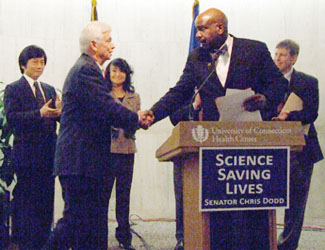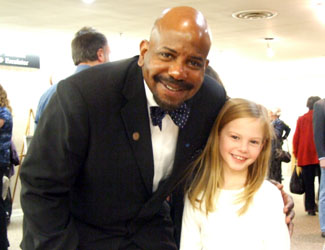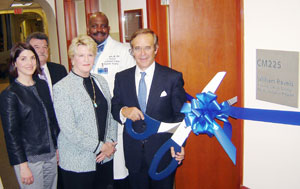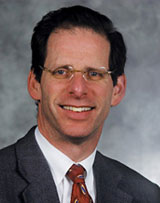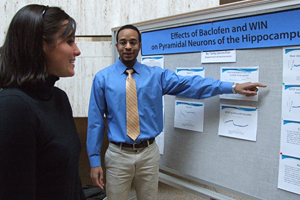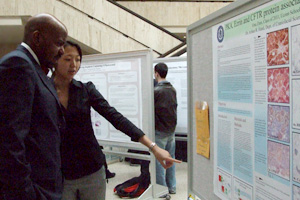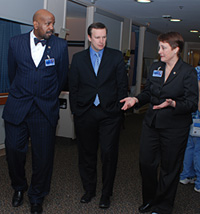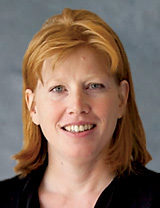Senator Chris Dodd hosted a celebratory event at the Health Center on Saturday to commemorate the nation’s renewed interest and commitment to stem cell research. On Monday, March 9, President Barack Obama signed an executive order allowing federal funding of embryonic stem cell research, overturning a Bush Administration policy. A state law enacted in 2005 appropriated $100 million in support over ten years for stem cell research.
Connecticut’s investment in stem cell research is paying off. Last month, Health Center researchers revealed that they have created two new lines of human embryonic stem cells. Only four universities in the nation have that capability. I am very excited about this new and promising era in stem cell research. By unlocking the power of stem cells, advances in treatments for Parkinson’s disease, ALS, diabetes, and some cancers may be on the horizon.
Joining Dodd was Congressman Chris Murphy who was instrumental in helping to pass Connecticut’s legislation while a member of the General Assembly. Also attending were A. Jon Goldberg, Ph.D., Director, Center for Biomaterials, UConn Health Center; Ted Rasmussen, Ph.D., Department of Molecular and Cell Biology, and Xiuchun (Cindy) Tian, associate professor of animal science, University of Connecticut, Storrs; Haifan Lin, Ph.D., Director, Yale Stem Cell Center; Lauren Cassot, stem cell research supporter, members of the Juvenile Diabetes Research Foundation, and stem cell research supporters.
I was inspired by comments made at the event by Lauren Cassot, an articulate 8-year-old girl. Lauren told the audience of what her life is like living with type 1 diabetes. She wears an insulin pump, monitors what she eats, and medical instructions accompany her on play dates. Lauren looks forward to the day when she can live a “normal” life without the complications of diabetes. She was thankful to President Obama for lifting the restrictions on embryonic stem cell research. As a parent and a clinician-scientist, I look forward to the day when no child has to live with diabetes or any chronic disease.
